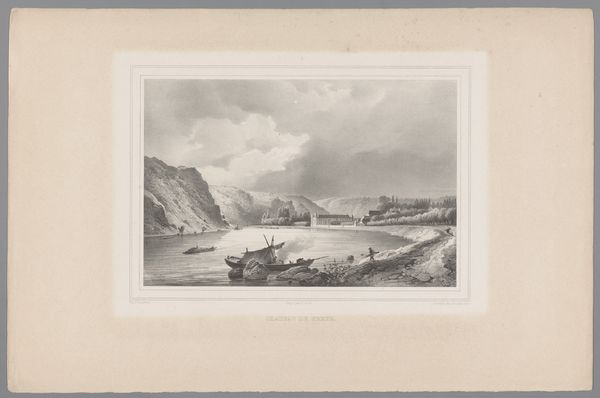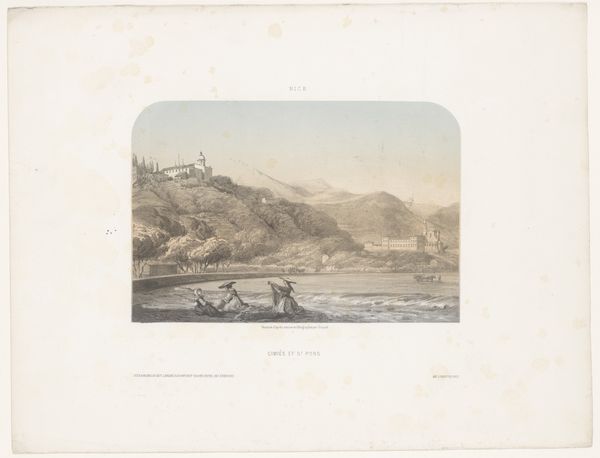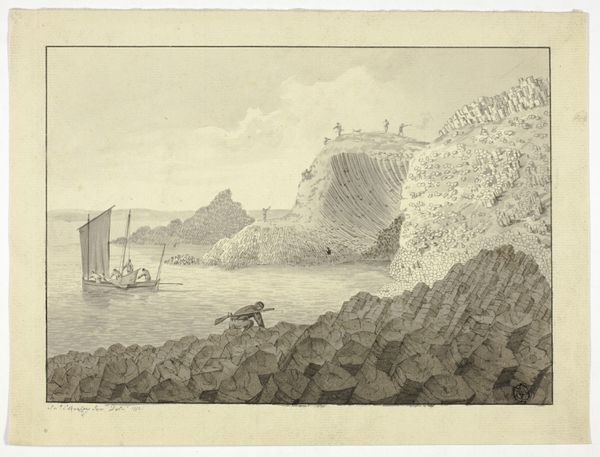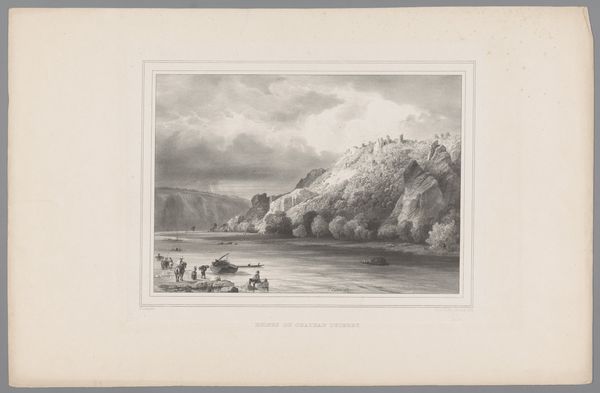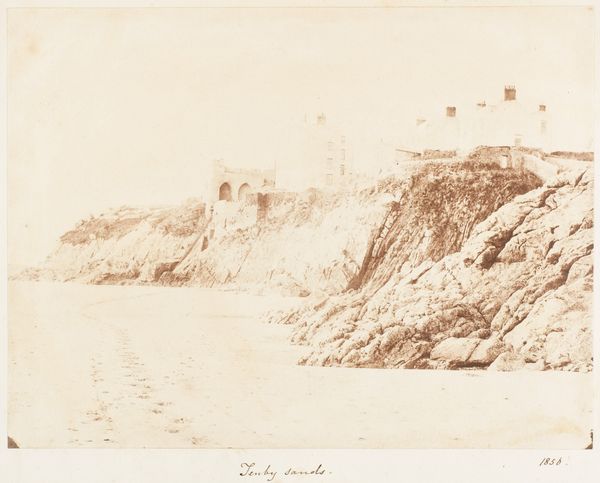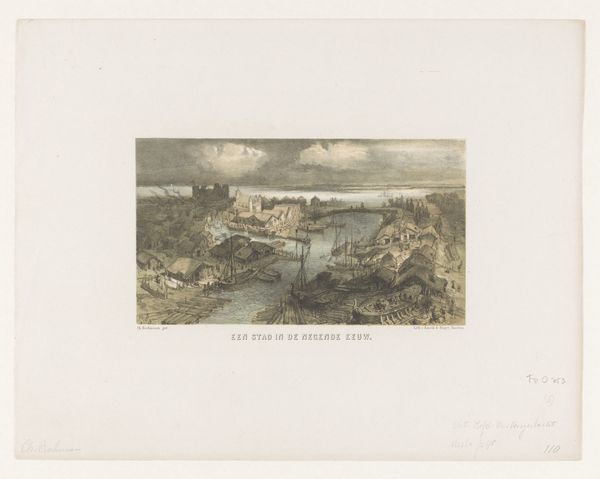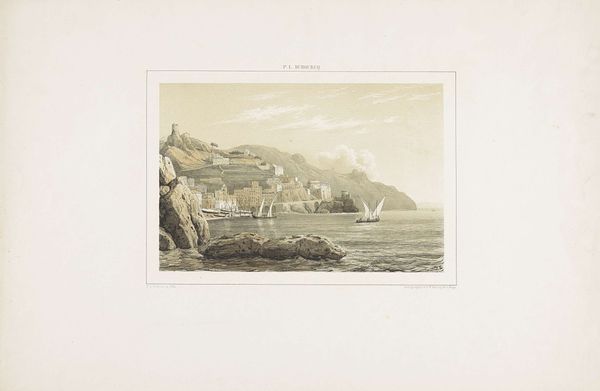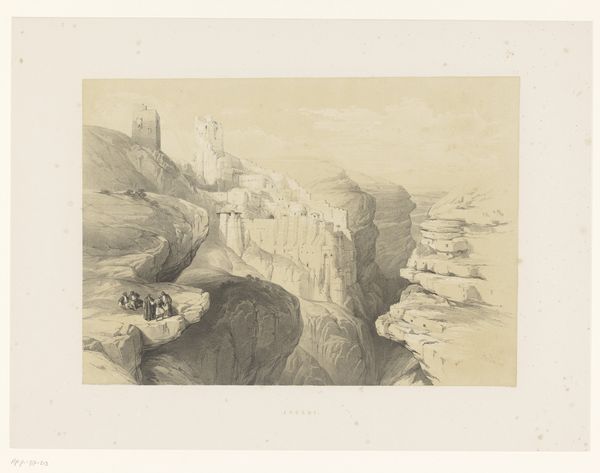
Dimensions: height 336 mm, width 494 mm
Copyright: Rijks Museum: Open Domain
Editor: This etching by Edward Lear, dating from 1824 to 1888, is entitled "Gezicht op Palaiokastritsa", or "View of Palaiokastritsa." The monochrome palette creates a rather serene, almost ethereal feel. What strikes you about the composition? Curator: The image possesses a meticulously organized structure. The horizontal bands – shore, sea, and sky – are consistently interrupted by the vertical thrust of the rock formations. Consider, too, how Lear modulates the tone. Observe the varying intensities, from the darker promontory on the left, drawing our eye toward the figures in the center, before then arriving at the sun-bleached cliffs to the right, thereby establishing a rhythmic viewing. Do you perceive it similarly? Editor: I do see that rhythm. It's interesting how the darks and lights guide your eye around the piece. What do you make of the figures included? Curator: The figures provide scale, underscoring the grandeur of the natural environment. The etching foregrounds form and arrangement of space, highlighting nature's supremacy and human subjugation. Do you detect a visual hierarchy at play? How might the semiotics of the scene relate to Romantic landscape theory? Editor: The hierarchy is certainly apparent. Nature really dwarfs those people. So you're saying that Lear uses the etching to explore Romantic ideas about nature's power, expressed through a kind of structural opposition? Curator: Precisely. This reading is informed through attention to formal elements; consider what other meaning emerges if the context is privileged. Editor: That's really interesting; I hadn't thought of it that way before, but it makes perfect sense now. I'll definitely pay more attention to those elements when viewing other art. Curator: Agreed. Through rigorous interrogation of visual structure and artistic design, we unravel the image's capacity to represent something beyond itself.
Comments
No comments
Be the first to comment and join the conversation on the ultimate creative platform.

